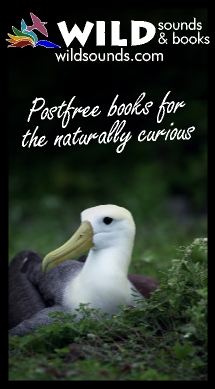The World’s Rarest Birds
Erik Hirschfeld, Andy Swash and Robert Still
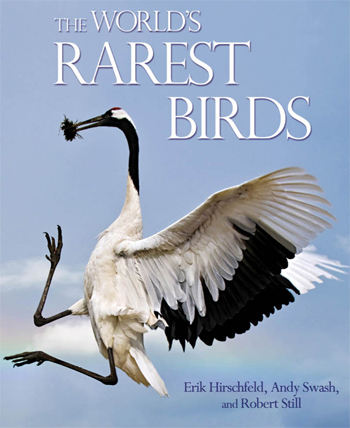
This book depicts the nearly 590 most threatened bird species on earth, those falling in the BirdLife International/IUCN Red List ‘Endangered’ and ‘Critically Endangered’ categories. Its title is therefore something of a misnomer for some very rare species are not included as, although rare, they are not currently assessed as endangered. Its publication represents a logical development of the ‘Rare Birds Yearbooks’ published in 2008 and 2009.
The books starts with a brief introduction to the world’s birds and their diversity and distribution. Also introduced are the key concepts of the Endemic Bird Area and Important Bird Area. Already obvious in this first section is the supreme importance to the world’s biodiversity of tropical regions.
The second major section defines what is meant by the terms ‘rare’, ‘endangered’ and ‘threatened’, explains the criteria for inclusion in the Red List and explains how a species’ threat status is assessed. It also clarifies the criteria for extinction, emphasising the utmost care which is taken to ensure that species are not ‘written off’ prematurely. In this respect, it is noteworthy that, later in the book, both Eskimo and Slender-billed Curlews are afforded full treatment, not (yet) considered to be officially extinct. Also discussed are a number of ‘problem areas’ where issues such as data deficiency or shifting taxonomy hinder an accurate assessment of threat.
Section three considers the threats faced by the world’s birds, and it is a long section... Top of the list is the conversion of land to agriculture and increasingly intensive agricultural practices. Next comes logging and then a long list of other factors. Some are natural (e.g. geological or weather events) but most, of course, are man-made - the introduction of invasive species, hunting, trapping, residential and commercial development, pollution, fishing, dams and water abstraction, disturbance, transport and utility lines, energy production and mining.
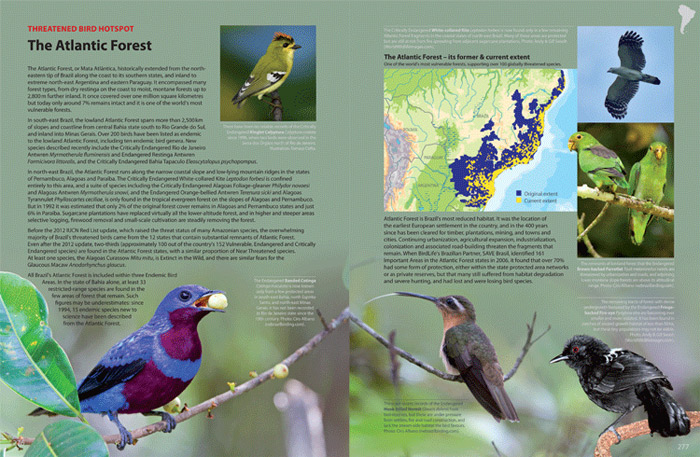
The fourth and largest section of the book comprises a set of eight ‘Regional Directories’, though these do not correspond with traditional faunal regions. Instead, the areas covered are Europe and the Middle East, Africa and Madagascar, Asia, Australasia, Oceanic Islands, the Caribbean, North and Central America and South America. Each ‘Directory’ introduces the most endangered birds of its region, providing a brief overview of their status and conservation challenges as well as information about their distribution and ecology.
Each species is also illustrated with a specially chosen photograph. These were carefully selected following an international competition and represent a truly mouth-watering collection of images. Personal favourites are the stunning portrayals of Scaly-sided Mergansers, Asian Crested Ibis and Red-crowned Crane. For some species, no photograph exists or none has been traced and a specially-commissioned colour plate has been substituted. Although a little ‘wooden’ and field guide-like, these are nevertheless pleasing and give a good account of what the species must look like.
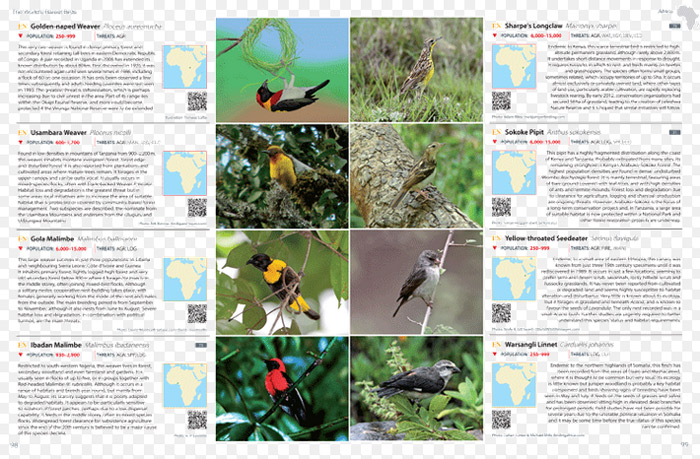
Each ‘Directory’ also contains a small number of ‘mini-essays’ devoted to describing the key conservation challenges facing the region or parts of the region or the problems faced by particularly troubled species groups (vultures, bustards, hornbills and albatrosses). These make a particularly informative, if worrying, read.
For a British reader, it is perhaps most interesting to look at the globally threatened birds which reach our shores. Those which occur most regularly are Balearic Shearwater (recognised for some time as a conservation priority with a population of no more than 13,000) and (more shockingly) Velvet Scoter. Though the world population of this delightful sea-duck is given as 250,000, it is in rapid decline and has, since 2012, been reclassified from ‘Least Concern’ to ‘Endangered’ as a result of marine pollution and interaction with commercial fisheries. This will come as a surprise to many and should also cause us to re-evaluate what we really mean by a ‘rare bird’.
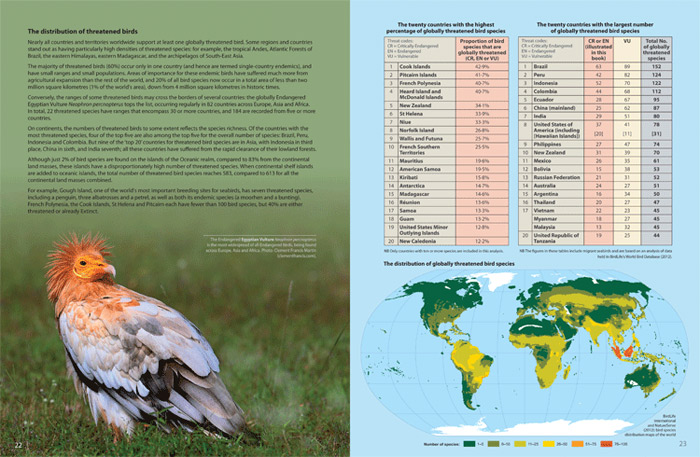
Hardback: 330 pages
Published: 2013 - Princeton University Press 2013
ISBN: 978-0691155968
RRP: £34.95
Special price for RBA users with discount code: SAVE £10.00 - Only £24.99
For details on how to get your exclusive discount code click here
As you would expect from the BirdLife team, this is a very well-researched and comprehensive publication. I spotted only one obvious error in the assertion that the Eskimo Curlew lost its prairie breeding grounds to the plough. Of course this species was a tundra breeder which passed through the Great Plains only on its spring migration.
The final section covers ‘Data Deficient’ species, an additional sixty birds which are so poorly known that it is impossible to assess their threat status. This section, as is the whole book, is right up to date and includes, for example, the rediscovery of Sillem’s Mountain Finch in Qinghai, China in 2012. A photograph of this gorgeous but little-known species is also included.
As well as being well-researched, authoritative and up to date, this is also an impressive product. It is large-format, heavy and substantial with a ‘quality feel’ and is liberally illustrated throughout. Unfortunately, it is not a particularly joyful read for it is disturbing to find not only Velvet Scoter but also such species as Egyptian Vulture within its pages. Reading this book is therefore something of a bitter-sweet experience. It is a beautiful production and the birds are alluring indeed but their possibly brief tenure on this planet provides ample cause for despair.
Andy Stoddart
May 2013



